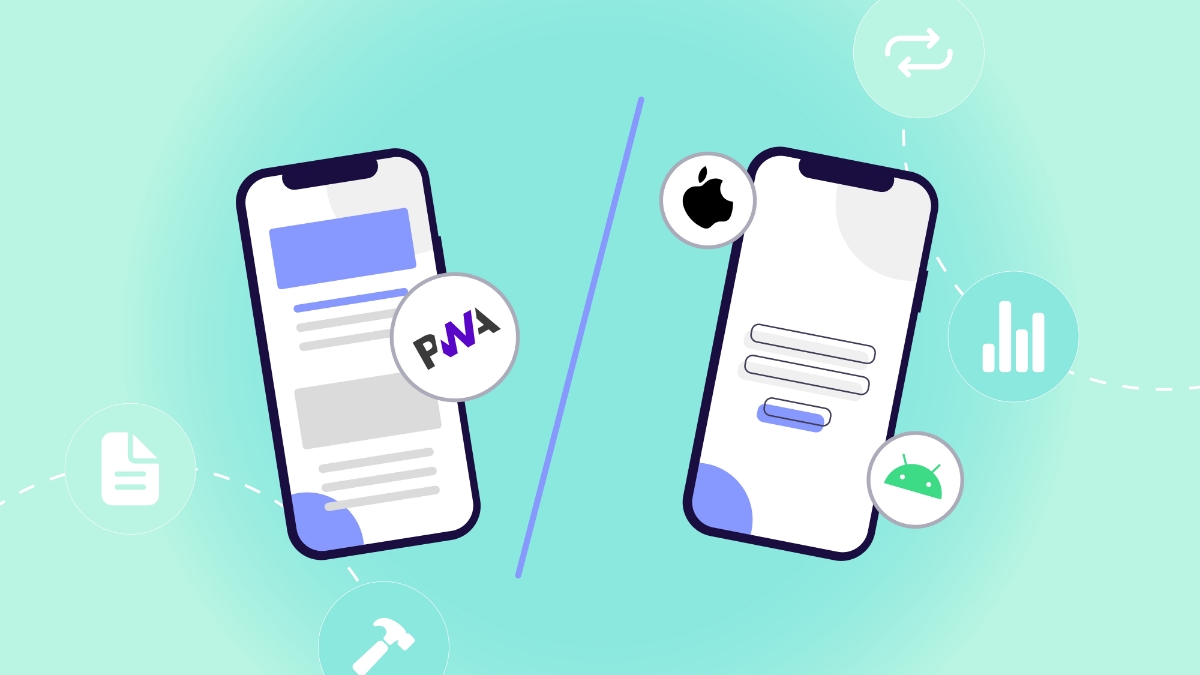PWAs represent a significant shift in how applications are built and experienced. These versatile tools combine the best elements of web and mobile applications, offering a seamless, high-performance experience across various devices and platforms.
Let’s take a look at the characteristics of a PWA, what makes them unique from native apps, and the factors that might influence whether or not you should invest in one.
What is a PWA?
A Progressive Web App (PWA) is a type of application software delivered through the web, built using common web technologies such as HTML, CSS, and JavaScript. The key distinction of PWAs is their ability to provide a more app-like experience while being accessed through a web browser. They combine the best features of web and mobile apps to deliver a seamless and engaging user experience.
Key Characteristics of PWAs:
- Responsive: PWAs work on any device and screen size, adapting their layout to provide an optimal user experience whether on a smartphone, tablet, or desktop.
- Offline Capability: PWAs can function even without an internet connection. This means users can access content and interact with the app offline.
- App-like Experience: PWAs mimic the feel of native mobile apps, including smooth animations, gestures, and navigation.
- Progressive Enhancement: They are designed to work for every user, regardless of their browser or device, by offering a baseline experience for all users and enhancing it for those with more advanced capabilities.
- Push Notifications: PWAs can send push notifications to keep users engaged and informed, even when the app is not open.
- Installation: Users can install PWAs on their devices from the browser, adding them to their home screen just like a native app, but without the need for app store distribution.
Do You Need a PWA?
Deciding whether to invest in a PWA depends on various factors, including your business goals, target audience, and existing digital strategy. Here are some considerations to help you determine if a PWA is right for you:
- Improving User Engagement: If your goal is to increase user engagement and retention, a PWA can be a powerful tool. Features like offline access and push notifications can keep users coming back and interacting with your content.
- Reaching a Broader Audience: PWAs are designed to work on a wide range of devices and browsers. If you want to ensure a consistent experience for all users, regardless of their device or operating system, a PWA can help bridge the gap.
- Cost-Effective Development: Developing a PWA can be more cost-effective than creating separate native apps for different platforms (iOS and Android). Since PWAs use a single codebase for all platforms, you can save time and resources on development and maintenance.
- Increasing Conversion Rates: If you’re looking to drive conversions, such as sales or sign-ups, PWAs can help. They offer a smooth, fast, and engaging user experience, which can lead to higher conversion rates compared to traditional web apps.
- Speed and Performance: PWAs are optimised for speed, which is crucial for user satisfaction. If your current web app is slow or cumbersome, a PWA can offer a more responsive and efficient experience.
- Maintaining a Web Presence: If you don’t have a mobile app but want to offer a similar experience, a PWA can be an excellent solution. It provides many of the benefits of a mobile app without the need for app store submission and updates.
When a PWA Might Not Be Necessary
While PWAs offer numerous benefits, they might not be the best fit for every scenario. Consider the following:
- Specific Platform Features: If your app relies heavily on platform-specific features or hardware (like AR or advanced sensor integrations), a native app might be more suitable.
- Complex Interactions: For highly complex applications that require intricate interactions and performance optimisations, a native app might offer better control and customisation.
- App Store Presence: If having a presence in app stores is crucial for your strategy, native apps might be necessary, as PWAs don’t generally fit traditional app store requirements.
Conclusion
Progressive Web Apps represent a significant evolution in web and mobile technology, offering a versatile and engaging user experience. They are especially valuable for businesses seeking to enhance user engagement, improve performance, and save on development costs. However, the decision to adopt a PWA should be guided by your specific needs and objectives. Assess your requirements, consider your audience, and weigh the benefits to determine if a PWA is the right choice for your digital strategy.
